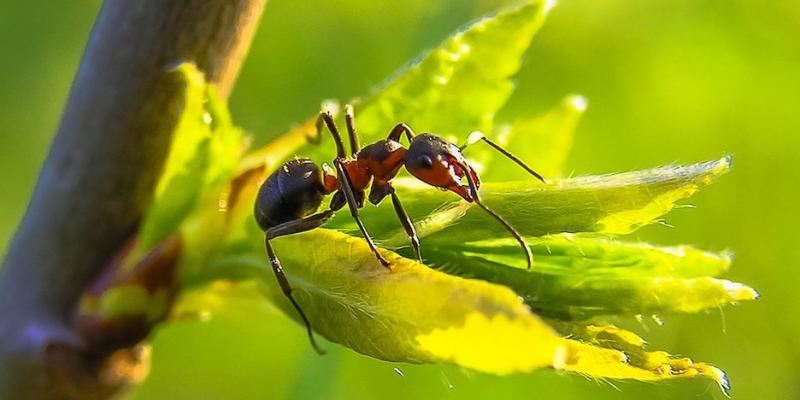Common Types of Ants in Louisiana

Different types of ants invade homes and buildings in Louisiana every year. Although most types of ants are not dangerous, some types can endanger your family members and pets. Knowing how to identify the types of ants that exist in your area and where they might be invading your home can help you take action quickly.
Common Types of Ants
There are several different types of ants in Louisiana, many of which can easily be confused with each other. To help you tell them apart, here are the most common types of ants that
Pavement Ants
The pavement ant is a common type of ant that does not cause any harm to your family or pets. They often invade homes and buildings during the winter, but they can be active all year. Although they are not dangerous, pavement ants can be a nuisance because of how many of them there are in large colonies.
Carpenter Ants
Some types of carpenter ants do not actually eat wood, but instead, they just chew holes into it to build their colonies. It is often difficult to prevent wood damage. Camponotus types of ants are very large and can be identified by their chestnut color. They also have blackheads with the rest of their bodies being brownish-red.
Odorous House Ants
The odorous house ant is a small ant with a single node between the thorax and abdomen. These types of ants have a distinct smell that some compare to coriander or citrus. They are often found in kitchens, bathrooms, and other areas where moisture can be found. Control methods for this types of ants should include removing any moisture from the home as well as sealing any cracks and crevices.
Sugar Ants
This species is also known as the Cornfield ant, which eats honeydew produced by aphids. They can be confused for fire ants, but they are smaller and lack the defined waist seen in fire ants.
Ghost Ants
The Ghost ant is a small ant that has a translucent abdomen making its organs visible from the outside. These types of ants do not have stingers and only bite to defend themselves. They will often nest in plants and can be hard to control on plants because they will return quickly after the pesticide is used on the plant.
Red Imported Fire ants
Red imported fire ants are types of ants that grow to approximately ¼"(1/25") inches long and their color ranges from dark brown to black with a slight sheen. They have a heart-shaped gaster (3rd body segment) that is 3 times longer than wide. Fire ant mounds can be as large as 18"(15.24") inches in diameter and usually have between 600-800 slave-maker ants but can hold as many as 100,000 types of ants. Fire ant sting causes itchy bumps that become blisters over time.
Pharaoh Ants
Pharaoh ants types of ants vary in size from 1/16"(1/50") to 1/8" inches long. They have a light brown body and legs, but their antennae and abdomen areas are darker. Pharaoh types of ants also have two nodes at the petiole (the joint between the thorax and abdomen).
How to Prevent Ants
Prevention Prevention is the best way to be rid of ants. There are several things you can do on your own to keep ants out of your home.
- Remove food sources. Make sure all food in the house is sealed tightly in airtight storage containers. If ants are coming in for an easy meal, they will quickly become a nuisance.
- Clean up all spilled foods and liquids immediately in the kitchen, dining room, or wherever they are found. Limit food consumption to one room or area of your house if possible.
- Store garbage in tight containers or bins with lids and remove garbage regularly.
- Prevent moisture buildup indoors. Ants can establish colonies in damp areas so fix plumbing leaks or condensation problems immediately. Fix any water leaks inside and keep indoor areas dry. Be sure that the exterior of your home is sealed properly so they can't enter through cracks or any openings.
- Prevent outdoor sources of food, water, and moisture.
- Eliminate all possible points of entry to your house with caulk. Use screens on windows and doors in good repair. If they are still getting in, consider placing bait near the point of entry.
How to Get Rid of Ants
If ants are still able to gain access into your home, there are a few things you can do to get rid of them.
Ant Bait and Traps
Ant baits are among the most effective ant removal methods. You can make your own outdoor ant bait or you can buy commercial ant baits that contain special food designed to attract ants. Once they find it, ants take the food back to their nests and share it with other ants in the colony. Traps, such as sticky traps, are also used to catch ants.
Natural Ant Repellent
The most effective natural ant repellents contain naphthalene (moth balls) or allethrin (synthetic pyrethrins). You can also try placing small piles of talcum powder, coffee grounds, chalk, or diatomaceous earth near their trails.
Spraying The Affected Area
If the ants are coming from a crack or crevice, you can apply a substance such as non-diethyltoluamide (DEET) to the area. Insecticides containing pyrethrins may also be effective, but because these substances can be harmful to plants and other living things around your house, so be sure to read the label and follow directions.
Spraying the Colony
Spraying a liquid insecticide directly onto ants is another option, but you'll have to spray the ants directly as well as broadcast the product over a larger area. This type of application may be difficult because many ant species tend to scatter when sprayed or disturbed, making it hard for sprays to reach the queen.
Hiring a Pest Control Company
If you don't want to do battle with ants yourself, or if past applications of insecticides have failed to control ant infestations in your home, the next step up is hiring a pest control company. Extermatrim offers local ant extermination services, providing customized care and working with you to ensure you get rid of ants permanently. Contact us today to get started!
